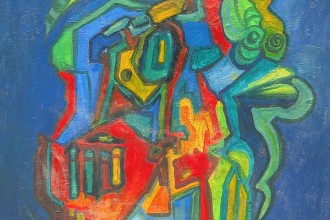By Salman Latif
Urdu on its death bed?
Language is not only a vehicle to transmit human thoughts and feelings, it also chronologizes human evolution. Despite having such profound importance, human languages have both eroded and evolved over time due to both social and political factors. Often, foreign invasions also entail a cultural colonialism, replacing local languages with the invaders’ lingua franca. The emergence of “culturally superior†nations overshadow domestic languages, sometimes even eliminating them.
The death of a language is like burying a hundred thousand souls: writers, poets and their treatises. With its demise are eroded many human traditions from the memory of mankind and the many pearls of human intellect are abandoned forever. Today, standing as we are a smidgen into the 21st century, Urdu faces a similar threat.
Pakistan’s national language has, for centuries captured the glory, tragedy and poetry of the sub-continent. People from all walks of life have pursued their literary ambitions through Urdu’s rich lexis, well-fostered by a rapidly evolving vocabulary. This has produced an extraordinary volume of literature in which poetry is exquisite, and its subtle prose stands uniquely in contrast with other world literatures.
The ghazal is without a doubt the most acclaimed of Urdu’s poetic genres. It is a unique poetic form combining rhyming, same-meter couplets and a refrain. The ghazal has been established for centuries as a direct, personal expression of human intuition, embellished with the most creative of the components: the qafia, or the alliterated consonant, stressed throughout a poem; radeef, the rhyming words; and ista’arat and tashbeehat, which allude to specific traits through analogies. It is here that the best of Urdu poets dwelt for the better part of their careers, creating impressions of human rigor and tragic love. Of late the ghazal has evolved bringing free verse into its fold. The latter has a taste of its own, being a recherché’ treat when coming from the pens of masters like Amjad Islam Amjab, Ahmed Faraz and Ahmed Nadeem Qasmi.
Some extraordinary chapters of Urdu literature make it essential for modern historians to preserve its legacy. As an exile in Rangoon the last Mughal Emperor, Bahadur Shah Zafar’s verses are the fine strokes of a consumed artist; a subtle decry, erupting from an individual forced to live in shame and absolute destitution.
Tell these longings to go live elsewhere
My bruised heart shall contain no more
(Bahadur Shah Zafar)
The tragedy vested in this verse elevates it from a mere couplet to a leaf from the annals of Pakistan’s history, registering a personal yet poignant anecdote of the fall of the Mughal empire through the shades of literature. A clearer cultural and historical analysis is possible only when considering this literary inheritance in retrospect.
Urdu prose also has a unique history. From the 17th to 19th centuries, the prime mover of Urdu prose was narration or ‘Dastaan’ (tales).However, over time, this genre evolved into a socio-political tool that was used actively by Indian scholars to further the sentiments of nationalism in a British-dominated sub-continent. Scholars like Muhammad Azad, Altaf Hussain Hali, Shibli Nomani and Sir Syed utilized this medium to extend their ponderous views to the public.
However, it was the short story that emerged to be Urdu prose’s most powerful form. From Manto to Premchand and Quratulain Haider to Ismat Chughtai, a diverse spectrum of ideas was painted across the canvas of the Urdu afsana (short story). Specifically, the afsana was brought to its zenith by the brilliant prose writers during independence. The chapters of a bloody independence, divorced from biased sentimentalism were penned in a form that depicted the bitter truth. The afsana thus became the voice of the clerisy, furthering tolerance through the bruised post-independence masses. Ghulam Abbas, Krishan Chander, Ahmed Nadeem Qasmi and Bedi are some of the brilliant afsana authors.
Flash forward to the 21st century and Urdu stands at the brink of artistic and aesthetic extinction. It has lost ground in its homeland and is set to perish in the face of an increased lingual and cultural “borrowingâ€. To allow a loss of this magnitude; to stand by doing nothing as a cultural heritage dies, effectively means effacing our own identities. The proud Khudi of Iqbal, the ingenious two-liners of Ghalib, the flowing lucidity of Dagh’s pen, the wit of Akbar Allah Abadi et al have perished. It would spell extinction for the recorded course of our cultural evolution and of the different facets of human thought that described our independence.
Language is the cornerstone for a civilization’s identity. If we don’t brace ourselves against cultural colonialism, Urdu as a language will eventually wear away and with it, centuries’ long traditions of discourse and intellectual contemplation. It’s time that such forums and institutions are given space in public discourse which can actively portend a revival of Urdu language. An already fragmented society like ours desperately needs a national commonality today – if only to remember and revive the glory that was once ours.
O’ Dagh only we know what (this language) is called Urdu
Our language is celebrated all over the world
(Dagh Dehalvi)
Editor’s Note: If you would like to respond to this piece, please send in your comments to [email protected]. We will publish them at our discretion in the following issue.




